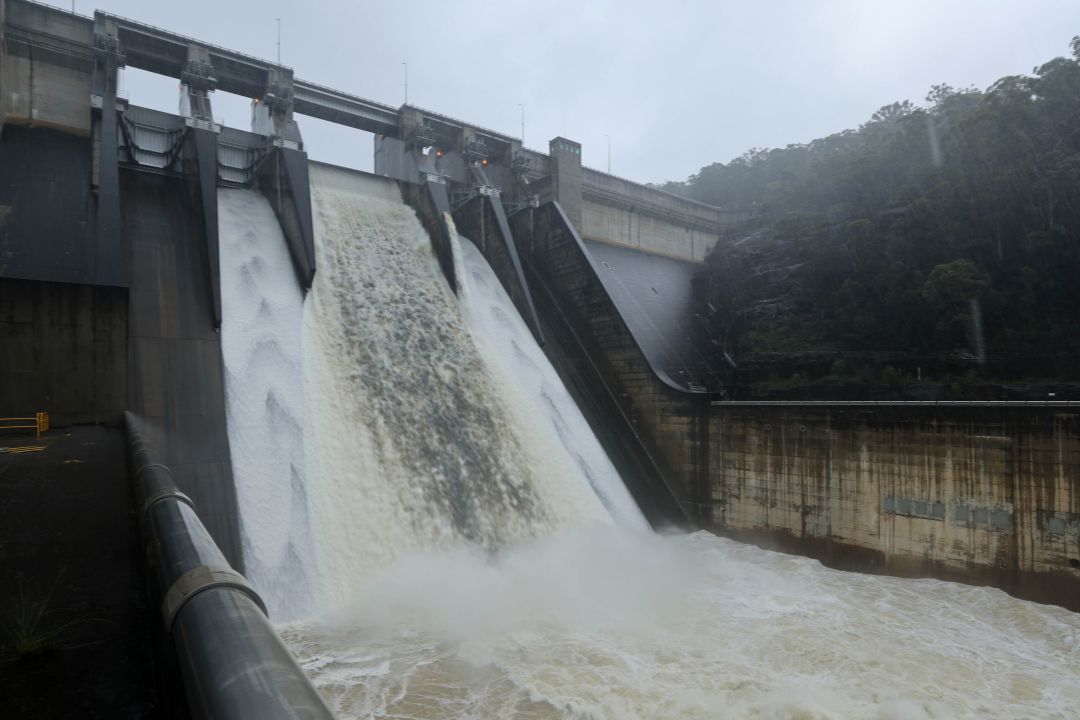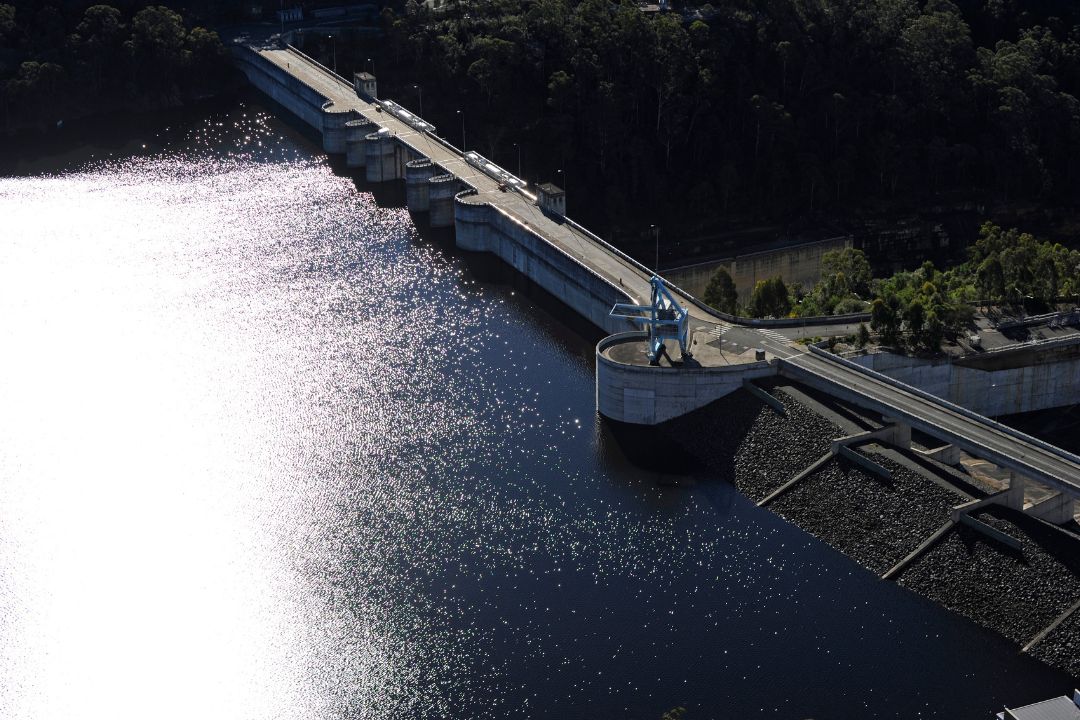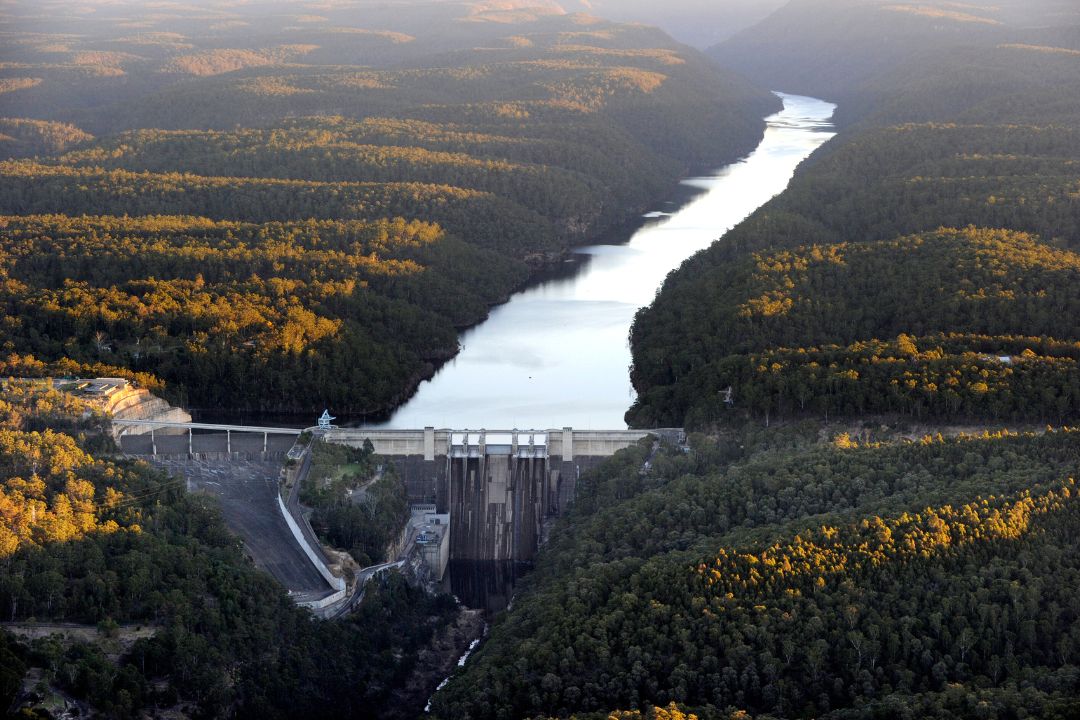

Is the dam safe for people downstream?
Yes. There is no immediate dam safety risk at Warragamba Dam.
The dam remains safe for day-to-day operations and can easily withstand extremely large and rare floods – far exceeding what has ever been recorded.
There are no structural issues with the dam wall and any climate driven dam safety risks are incredibly remote.
However, in adapting to climate change and the risk that extreme floods would pose to downstream communities, WaterNSW as the owner and operator of Warragamba Dam, must assess practical and reasonable ways to reduce them, in line with contemporary dam safety regulatory standards (which were amended in 2022).
Will the dam wall be raised?
The Premier has confirmed that the NSW Government policy is not to raise the dam wall for flood mitigation or additional water storage.
What’s the risk to Sydney’s water security?
The risks posed to the safety of Warragamba Dam do not present an immediate risk to water supply or water security.
What is the risk that is causing the safety concern?
The risks to the dam are theoretical and remote.
As our understanding of climate change and statistical hydrology evolve, so does our understanding of the size and frequency of extremely rare flood events.
The risk identified at Warragamba Dam is associated with extreme flooding events or the Probable Maximum Flood (the PMF), which is the hypothetical largest flood, or combination of floods. The PMF is a highly improbable scenario, far greater than anything recorded and highly unlikely to occur in nature. However, the updated NSW dams safety regulations require we manage this risk.
Under extreme and rare flooding scenarios, it is theorised that a geological seam under the dam wall could threaten its integrity, or under the most extreme scenario, water levels in the lake behind the dam could rise and cause the dam to be overtopped, which could damage the dam asset (wall and gates).
While the likelihood of such extreme events is extremely low, as responsible asset custodians WaterNSW must factor this possibility into the risk profile it needs to manage.
What are the next steps?
Investigations are now underway to explore what measures may be required to address these issues and to ensure the dam remains compliant with the latest NSW Dams Safety Regulations.
Government and regulators will continue to work together to ensure the appropriate steps are taken to maintain the safety of this essential asset and the communities who rely on it.
When did WaterNSW confirm the risks to the dam?
WaterNSW completes routine and periodical risk assessments of its dams.
As our understanding of climate change and statistical hydrology evolve, so does our understanding of the size and frequency of extremely rare flood events.
Studies completed in March this year have confirmed the extent of the climatic and geotechnical risks facing the dam in its current configuration.
These, combined with changes to the NSW Dams Safety Regulations in 2022, mean further consideration of the risks and reasonableness of any response, are required.
How much will the project cost and who will pay?
At this early stage it is not clear what, if any, works are required, or when.
WaterNSW will collaborate with the NSW Reconstruction Authority on a high-priority Disaster Adaptation Plan for the Hawkesbury-Nepean Valley, which will guide our thinking.
Given this, the cost of any potential structural upgrade works is yet to be determined. WaterNSW will share more details when they are available.
What structural works are required?
It is not confirmed what, if any, structural works will be required.
They could involve the construction of a concrete buttress and/or anchoring to strengthen the current wall, however these responses are still being investigated.
Weren’t dam safety concerns addressed by the construction of the new spillway 20 years ago?
The auxiliary spillway was constructed in 2002 to respond to an improved understanding of the risks associated with extreme floods and the Probable Maximum Flood (PMF) at the time.
As our understanding of climate change improves, so does our understanding of the potential size and frequency of extreme floods.
Given significant advances in climate science and statistical hydrology since 2002, we now understand the potential for these extreme rainfall events to be significantly larger than previously thought, albeit with a significantly lower likelihood of occurring.
How urgent is it to undertake these works?
While the dam remains safe for day-to-day operations, it is incumbent upon WaterNSW as responsible dam managers to assess emerging risks and determine appropriate risk reduction action, consistent with regulatory standards.
WaterNSW will perform all the investigations and due diligence before making a decision to proceed with any work.
The next phase of work is about doing the due diligence, and carefully assessing the information gathered, so we can deliver the best outcome for our community.
What reviews of the dam's safety have been undertaken to date?
WaterNSW is constantly reviewing dam safety at Warragamba. Most recently WaterNSW has completed a comprehensive geotechnical drilling program to better inform its understanding of the geotechnical risks.
The findings of this assessment were reviewed and confirmed by a panel of Australian and International industry experts.

Lake Burragorang, which is the water stored by the dam, holds approximately 2,000 gigalitres - about four times more water than Sydney Harbour.
Warragamba Dam facts and figures
- Sydney’s primary water supply dam, providing as much as 80% of all drinking water for the city.
- Constructed between 1948 and 1960.
- Water that fills the lake drains from a catchment area of over 9000 square kilometres that stretches from south of Goulburn to north of Lithgow.
- Significant dam safety upgrades in the past (to protect the dam from extreme floods, the size and frequency of which have now been revised):
- Late 1980s – dam wall strengthened and raised in height by 5 metres
- Early 2000s – construction of auxiliary spillway.
Related links
Published date: 8 June 2023
WaterNSW acknowledges the traditional custodians of the lands and waters on which we work and pay our respects to all elders past, present and emerging. Learn more
